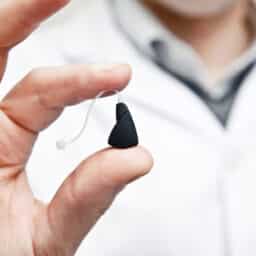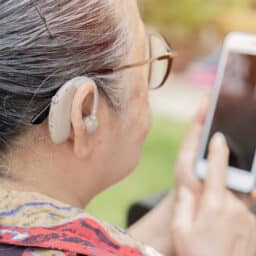Staying Active with Hearing Aids

Staying physically active is an important part of staying healthy and connected. If you live an active lifestyle and are a new hearing aid user, you may be wondering how exercising and engaging in physical activities and hobbies will work with your hearing aids. This is a common concern among new hearing aid users, so…
How Does Sound Therapy for Tinnitus Work?

Tinnitus is both frustrating and common. Roughly 20% of the American adult population—about 50 million people—has experienced tinnitus. Tinnitus is characterized by a sound in the head that has no external source. This can be a ringing, buzzing, whooshing or roaring sound, and since there is no external source, your brain gets confused about where…
How to Select the Right Hearing Aids for Your Needs

Nearly 28.8 million Americans could benefit from using hearing aids, but many go without. Some people may not know where to start with selecting the right hearing aids due to the many styles and features available. With a little guidance and a professional assessment, you’ll be equipped to make an informed decision that improves your…
Can I Have Tinnitus in One Ear?

Tinnitus is the perception of sound when no sound is present. Around 10% of American adults have experienced tinnitus symptoms lasting at least five minutes in the past year. Unilateral tinnitus is a form of tinnitus where a person only has tinnitus symptoms in one ear. Causes for Unilateral Tinnitus A variety of factors can…
Strategies for Listening to Music with Hearing Loss

When living with hearing loss, activities you once cherished, like listening to your favorite music, can become less enjoyable. You may find it hard to distinguish between instruments or struggle to make out lyrics clearly. While hearing aids help many people overcome these challenges and enjoy music again, they aren’t always the complete solution for…
How to Protect Your Hearing Aids While Swimming

With summer just around the corner and many of us looking forward to sunny days at the pool or beach, it’s important to consider how to keep your hearing aids safe from moisture. Here are some tips to keep your hearing aids in top condition. How Moisture Affects Hearing Aids Hearing aids are sensitive electronic…
What Are the Differences Between Conductive & Sensorineural Hearing Loss?

There are three main types of hearing loss: conductive, sensorineural and mixed. The first two are classified based on where the problem is within the ear, while the last one is a combination of both. In this post, we focus on conductive and sensorineural hearing loss—primarily, the differences between them. Where They Occur Within the…
Tinnitus and Mental Health: Coping with the Emotional Impact

Tinnitus, characterized by a persistent ringing or buzzing sound in the ears without an external source, can lead to anxiety, depression and other physical symptoms. Adopting effective coping strategies for tinnitus can help improve quality of life. Symptoms of Tinnitus Tinnitus is often linked to hearing loss, and living with its symptoms can be overwhelming….
Hearing Aid App Features You May Not Know About

Hearing aids have come a long way from simply amplifying sounds. Today, they’re sophisticated devices that can significantly improve the lives of an estimated 28.8 million adults in the U.S. who experience hearing loss. Modern hearing aids do more than just boost volume; they offer customizable settings, advanced features and easy access through companion smartphone…
A Guide to Protecting Your Hearing Aids Through Seasonal Changes

As the crisp fall air starts heading towards us, it’s a good time to consider how the changing seasons affect your hearing aids. With over 15% of U.S. adults living with hearing loss and many relying on hearing aids to maintain their quality of life, understanding how to protect these devices throughout the year is…
